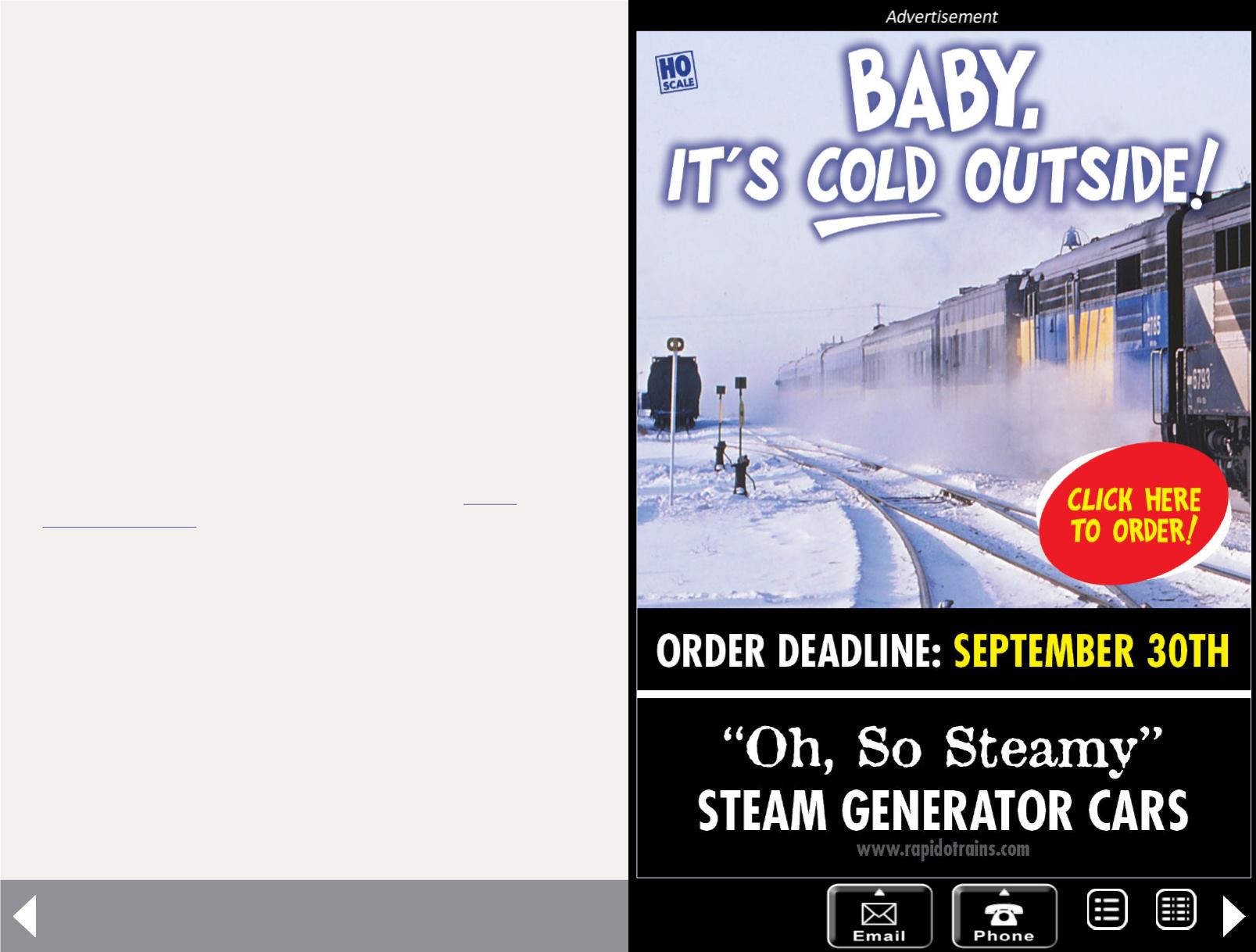
many hours and dollars of wasted resources building a layout
that you just get to tear out because it isn’t satisfying.
From operation experience, you will learn about facing point
and trailing point spurs, runaround tracks, passing tracks, cross-
overs, staging tracks … many kinds of tracks and their purpose.
You also may encounter things like a helix, reverse loops, wyes,
and how model railroads use them to manage the flow of
trains on a layout.
You should also make sure to try different jobs at these op ses-
sions. Try running through trains and compare them to running
a local or a turn. Also try a yardmaster switching job. If the posi-
tion is available, try an industrial area switching job, or an engine
hostler job.
From this, you will learn what all these different kinds of tracks
are for, and you will have a much better sense of what a good
track plan needs.
As for books, check out John Armstrong’s
Track Planning for
Realistic Operation
. You can get it on Amazon here:
.
John takes you step-by-step through the different kinds of track
arrangements on the prototype and what your options are for
representing them on a model railroad track plan.
Frommy own experience of running trains in op sessions like this,
and from studying John’s
Track Planning for Realistic Operation
book, it dawned on me that you should be able to do some com-
putations on any track plan and be able to somewhat determine
its operational potential.
Turns out, someone else came to that same conclusion about
being able to apply mathematical formulas to determine a track
plan’s operating potential. Dr. Roy F. Dohn, way back in the June
1968 issue of
Model Railroader,
published an article “Layout Plans
by Formula”. I took Dr. Dohn’s formulas and updated them to
Assistant Editors editorial - 3
MRH-Sep 2014


